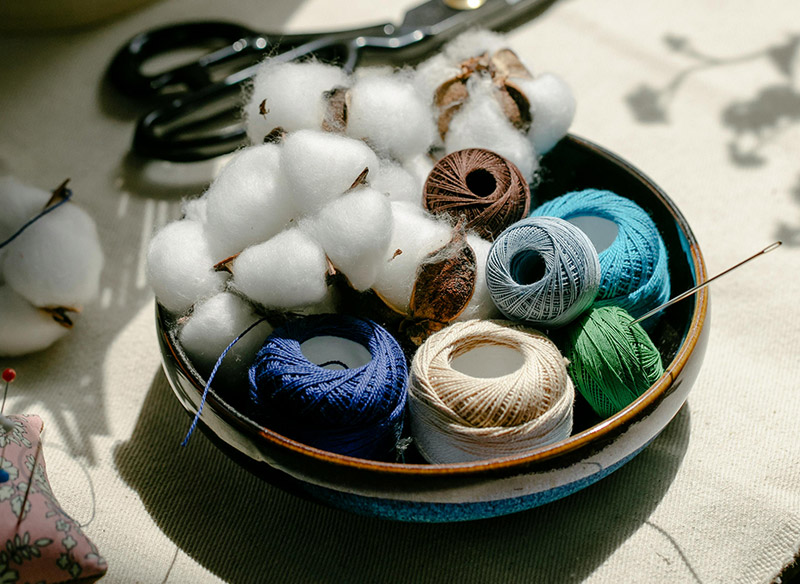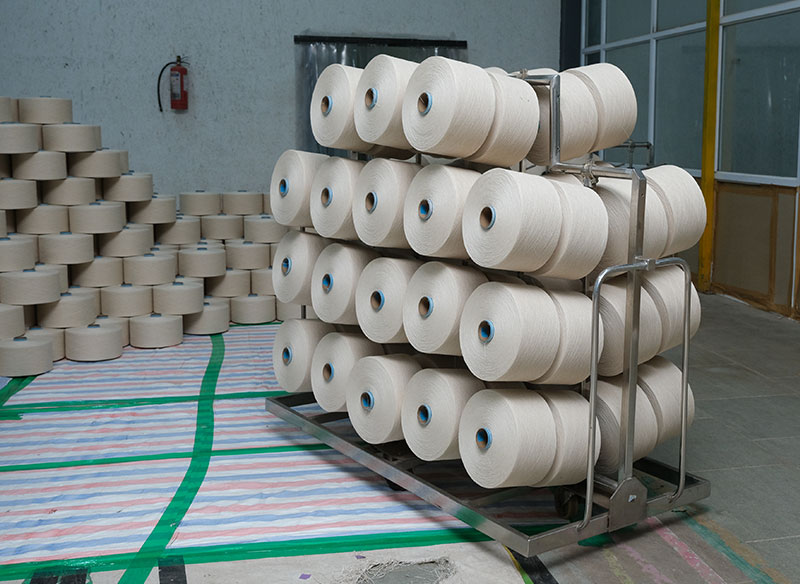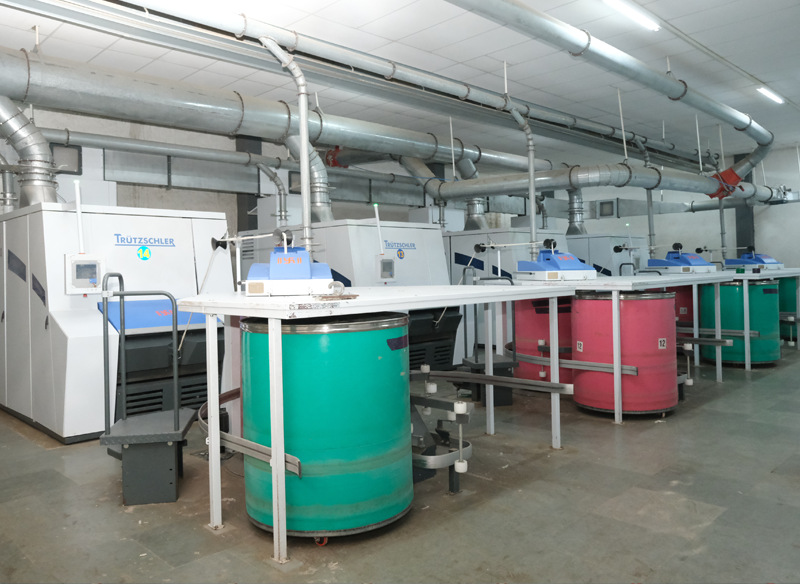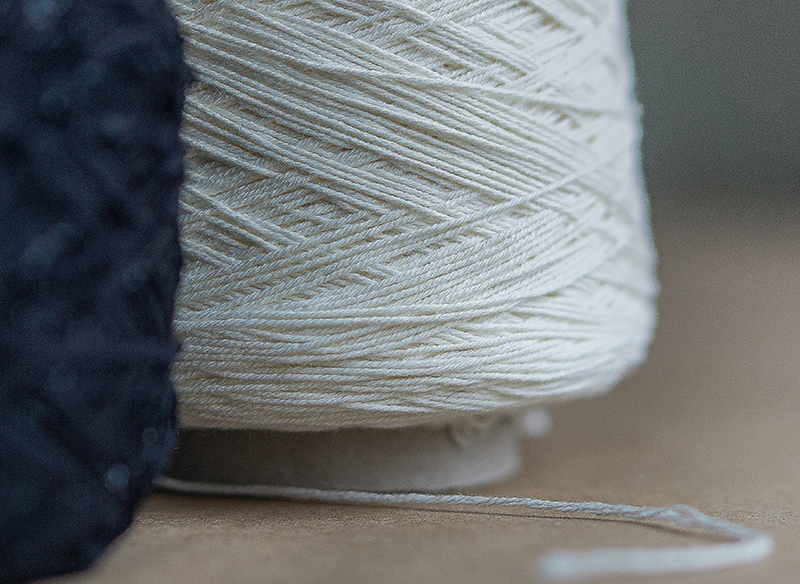25 Jan, 2025

What are Cotton Yarns?
Cotton is a cellulosic natural fiber. Additionally, cotton is derived from cotton plants that grow in several nations, including the United States, India, and Egypt, among others. Cotton is also a seed fiber. In addition, cotton fibers are transformed into yarn by a variety of procedures, including spinning, weaving, dying, and wet processing. Additionally, it is used to generate colourful threads, colourful textiles, and mixed fabrics composed of polyester, lycra, and other textile fiber.
Before beginning your next cotton yarn-based crochet, knitting, or arts and crafts project, it is a good idea to familiarise yourself with more of the many uses that can be found for this versatile material. Cotton is a robust material that retains its performance characteristics even after being washed. It is breathable, low-maintenance, and easy to care for.
Cotton is an excellent choice for use in the production of things that are gentle for infants, long-lasting for clothes, cozy for blankets, and decorative accents. However, you should educate yourself on the many varieties of cotton yarn available. Some types of cotton yarn may work better for the next project you do.
Most of the time, you will choose a yarn that is composed of cotton or a cotton-based combination. Don’t forget to mention how the appearance and texture of your next crocheted, knitted, or woven object will be impacted by the weight and ply of the yarn you choose to use.
Cotton has a wide variety of uses across the board in every region of the globe. The cotton sector is currently thriving, and it is anticipated that production will increase by 2%–3% in the very near future. People have a strong preference for making their clothing and accessories out of cotton as opposed to employing other types of materials. Cotton is easy on the skin, doesn’t weigh much, looks great, breathes well, lasts a long time, and needs little upkeep.
Blended yarns may be produced in the textile industry by mixing two distinct fibers in order to increase the yarn’s strength, attractiveness, and longevity. Because products made entirely of cotton tend to be very expensive, there is a significant demand for cotton blends all over the globe. Not only does the combination bring about significant cost savings, but it also has a wide range of other advantages. It is common to practice combining a number of different fibers, and this combination is done for a variety of reasons in order to enjoy the quality and receive extra advantages.
Types of cotton blended yarn
The production of blended yarns involves tying together spun fibers that come from a variety of different sources.
When a blended yarn is created from fibers that have comparable elasticity and fiber length, the resultant yarn has a softer and more pleasant feel when worn against the skin.
Further, when different types of yarn are blended, the resulting product is known as blended yarn. Synthetic fibers are often used in the manufacturing process of blends. However, natural fibers like cotton and wool are sometimes included.
As opposed to utilizing just one kind of fiber, employing blended yarn creates a mix that is more flexible and durable than individual fibers.
In order to obtain immense strength, smoothness, and remarkable resistance, the textile industries often blend cotton of the highest possible quality with a variety of other threads. The following are the most common varieties of blended cotton yarns that you can buy from Radheshyam Spinning Mill PVT. LTD.:
Cotton and Polyester
It is the combination that will last the longest in the textile industry. When combined with the suppleness and breathability of cotton, polyester can perform wonders in the textile business. Polyester is known for its durability and brilliance. In order to keep the comfort, skin-friendly quality, and breathability, a mixture of cotton and polyester in the proportion of 65:35 correspondingly is used. Other common cotton-polyester mixes include 67% polyester, 33% cotton, 50% cotton and 50% polyester.
Cotton and Viscose
Viscose is mixed in with cotton to provide a more consistent and comfortable feel while also providing extra support. It is only the viscose that is ruled unfit for usage. It makes for a very comfortable combination when used in conjunction with cotton. These mixes include a large amount of cotton in varying percentages. Cotton and viscose mixed yarns with percentage compositions of 85%-15% and 70%-30% are the most frequent types.
Cotton and Acrylic
Cotton adds to the comfort of the next level, whereas acrylic provides softness, warmth, and long-term durability; yet, cotton also contributes to the comfort of the next level. This is the ideal combination for making clothing that is not only warm but also very pleasant to wear. The most typical ratios for cotton-acrylic blends are 75% acrylic and 25% cotton, 60% acrylic and 40% cotton, and 50% cotton and 50% acrylic.
Cotton and Wool
When combined with wool, the comfort level of cotton fabric, as well as its degree of softness and its level of durability, may all be brought to a whole new level. The combination of cotton and wool creates a fabric that is both warm and pliable, thanks to the contribution of wool. It makes the wearer feel less weighed down despite its ability to give warmth in cold weather.
Cotton and Nylon
Nylon is a synthetic fiber that has a number of desirable properties, including resistance to creases, smoothness, and added strength. Cotton that has been mixed with nylon in order to make it more stretchy and more durable. Due to the composition of the mix, it is appropriate for use as warp yarns in long-lasting textiles that have antistatic qualities and may be coloured.
The yarns that are a combination of cotton and other fibers are a fantastic option in every respect. The outstanding features of the superior cotton yarn are easily enhanced with the use of the modern mixing technique. Through the use of mixed yarns, a greater number of people all around the globe will have access to the benefits of high-quality cotton. They are sustainable, in addition to being inexpensive and needing little in the way of upkeep.




